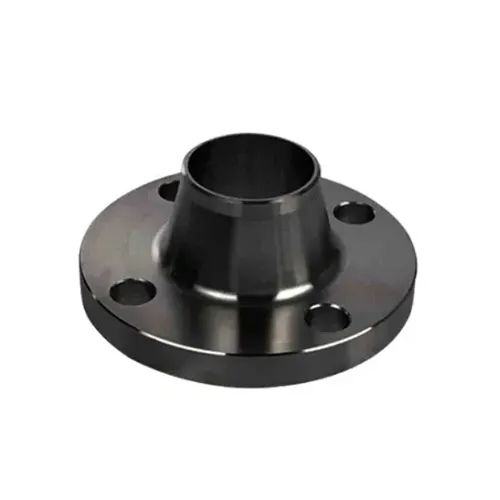-
Cangzhou Yulong Steel Co., Ltd.
-
Phone:
+86 13303177267 -
Email:
admin@ylsteelfittings.com
- English
- Arabic
- Italian
- Spanish
- Portuguese
- German
- kazakh
- Persian
- Greek
- French
- Russian
- Polish
- Thai
- Indonesian
- Vietnamese
- Zulu
- Korean
- Uzbek
- Hindi
- Serbian
- Malay
- Ukrainian
- Gujarati
- Haitian Creole
- hausa
- hawaiian
- Hebrew
- Miao
- Hungarian
- Icelandic
- igbo
- irish
- Japanese
- Javanese
- Kannada
- Khmer
- Rwandese
- Afrikaans
- Albanian
- Amharic
- Armenian
- Azerbaijani
- Basque
- Belarusian
- Bengali
- Bosnian
- Bulgarian
- Catalan
- Cebuano
- China
- China (Taiwan)
- Corsican
- Croatian
- Czech
- Danish
- Esperanto
- Estonian
- Finnish
- Frisian
- Galician
- Georgian
- Kurdish
- Kyrgyz
- Lao
- Latin
- Latvian
- Lithuanian
- Luxembourgish
- Macedonian
- Malgashi
- Malayalam
- Maltese
- Maori
- Marathi
- Mongolian
- Myanmar
- Nepali
- Norwegian
- Norwegian
- Occitan
- Pashto
- Dutch
- Punjabi
- Romanian
- Samoan
- Scottish Gaelic
- Sesotho
- Shona
- Sindhi
- Sinhala
- Slovak
- Slovenian
- Somali
- Sundanese
- Swahili
- Swedish
- Tagalog
- Tajik
- Tamil
- Tatar
- Telugu
- Turkish
- Turkmen
- Urdu
- Uighur
- Welsh
- Bantu
- Yiddish
- Yoruba

Aug . 17, 2024 05:37 Back to list
18-inch 90-degree elbow fitting for optimal pipe bending solutions
Understanding the 18-Inch 90-Degree Elbow A Key Component in Piping Systems
When it comes to industrial piping systems, the importance of fittings cannot be overstated. Among the various fittings available, the 18-inch 90-degree elbow stands out as a crucial component in many applications. This article delves into the significance, construction, applications, and advantages of using an 18-inch 90-degree elbow in piping systems.
What is an 18-Inch 90-Degree Elbow?
An 18-inch 90-degree elbow is a type of pipe fitting that provides a 90-degree turn in the piping direction. With a nominal diameter of 18 inches, it is commonly used in large-scale piping systems, such as those found in water treatment plants, chemical processing facilities, and HVAC systems. The elbow allows for a change in the flow direction of liquids and gases, facilitating efficient transport within the system.
Construction Materials
The construction material of a 90-degree elbow is a vital consideration, as it affects the fitting's durability, pressure rating, and resistance to corrosion. Common materials for manufacturing these elbows include
- Carbon Steel Known for its strength and durability, carbon steel is widely used in industrial applications. It is often coated or painted to prevent corrosion.
- Stainless Steel This material offers excellent corrosion resistance and is ideal for applications involving chemicals or high temperatures. Stainless steel elbows are commonly found in food processing and pharmaceutical industries.
- PVC and CPVC These plastic materials are lightweight, corrosion-resistant, and suitable for low-pressure applications. They are often used in plumbing and drainage systems.
Choosing the appropriate material for an 18-inch 90-degree elbow depends on the specific requirements of the application, such as the type of fluid transported, temperature, and pressure conditions.
Applications of 18-Inch 90-Degree Elbows
The 18-inch 90-degree elbow finds utility in various sectors, including
18 inch 90 degree elbow

1. Water and Wastewater Management In municipal water treatment facilities, these elbows are crucial for redirecting the flow of water through filtration and treatment processes.
2. Chemical Processing The chemical industry frequently uses large-diameter elbows to maneuver corrosive substances safely. Their robust construction ensures that they can handle the pressures and temperatures involved.
3. HVAC Systems In heating, ventilation, and air conditioning systems, 90-degree elbows help efficiently direct airflow, contributing to effective climate control in buildings.
4. Oil and Gas In pipelines transporting oil, natural gas, or other hydrocarbons, 18-inch elbows are necessary for managing the flow and making directional changes safely.
Advantages of Using 18-Inch 90-Degree Elbows
The use of 18-inch 90-degree elbows in piping systems comes with several benefits
- Space Efficiency Piping systems often have limited space. The compact design of the elbow allows for efficient use of space while still facilitating directional flow changes.
- Reduced Pressure Drop Unlike sharp turns, the smooth curvature of a 90-degree elbow minimizes turbulence, resulting in less pressure drop across the fitting. This characteristic enhances the overall efficiency of the piping system.
- Versatility With various sizes and material options, 18-inch 90-degree elbows can be customized to meet a wide range of industrial needs.
Conclusion
In summary, the 18-inch 90-degree elbow is an essential component in many industrial piping systems. Its ability to facilitate direction changes in the flow of liquids and gases while maintaining pressure and minimizing turbulence makes it an invaluable asset in applications ranging from municipal water treatment to chemical processing. Understanding its construction materials, applications, and advantages can aid engineers in selecting the right fitting for their specific needs, ultimately ensuring the efficiency and reliability of their piping systems.
Latest news
-
ANSI 150P SS304 SO FLANGE
NewsFeb.14,2025
-
ASTM A333GR6 STEEL PIPE
NewsJan.20,2025
-
ANSI B16.5 WELDING NECK FLANGE
NewsJan.15,2026
-
ANSI B16.5 SLIP-ON FLANGE
NewsApr.19,2024
-
SABS 1123 FLANGE
NewsJan.15,2025
-
DIN86044 PLATE FLANGE
NewsApr.19,2024
-
DIN2527 BLIND FLANGE
NewsApr.12,2024
-
JIS B2311 Butt-Welding Fittings LR/SR 45°/90° /180°Seamless/Weld
NewsApr.23,2024











